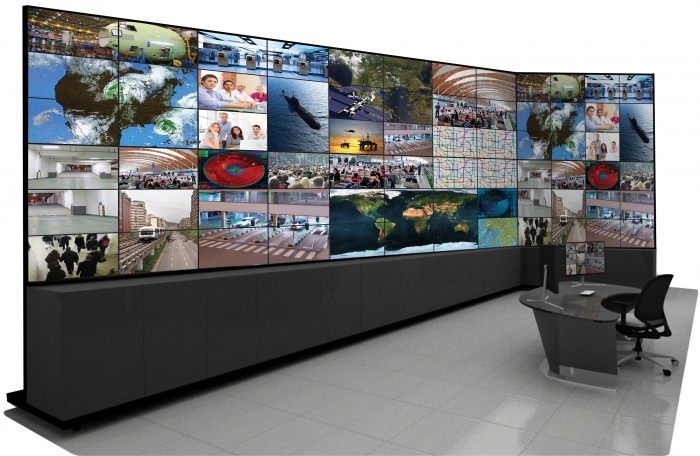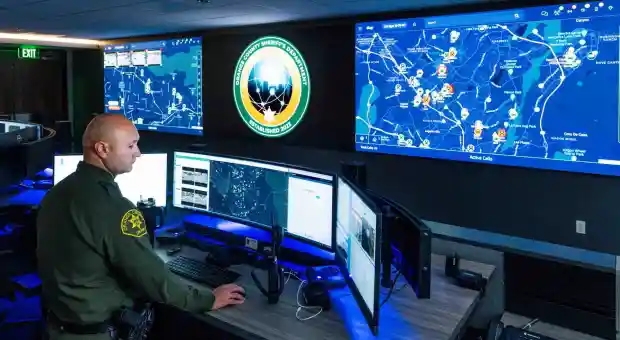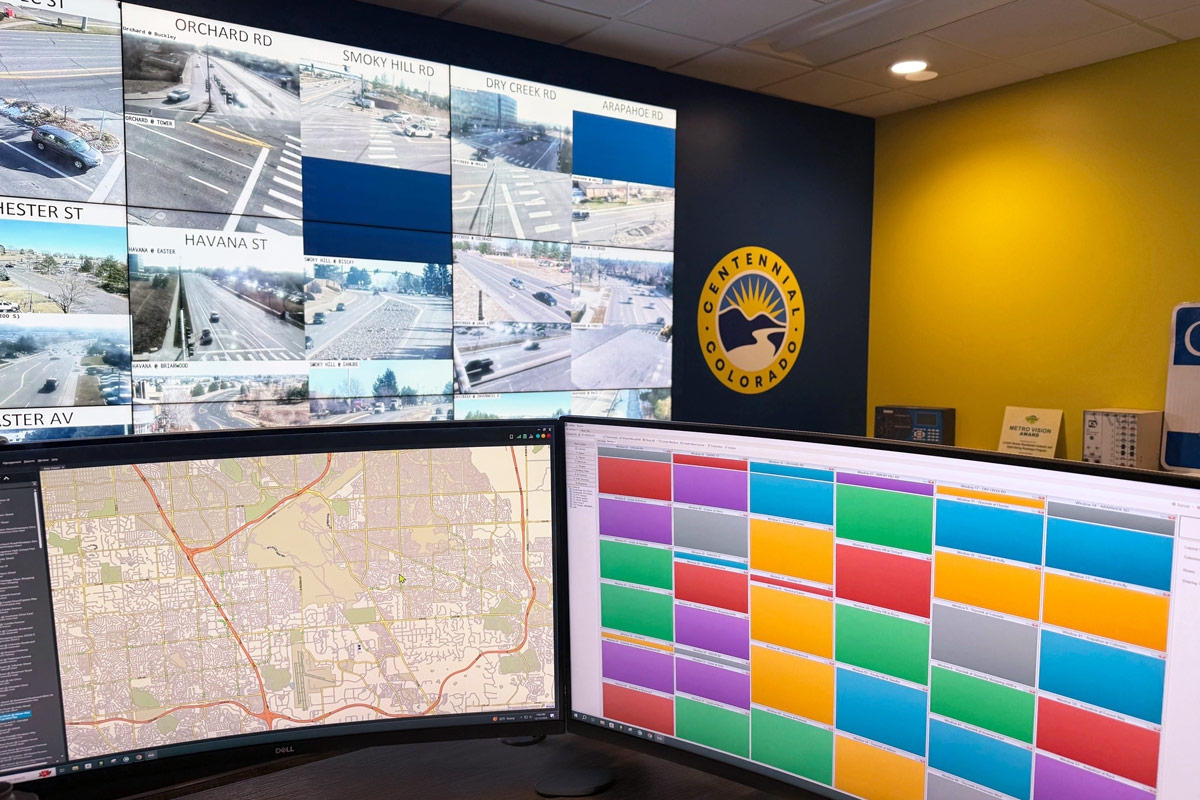The Challenge of Displaying Hundreds of IP Cameras on a Video Wall
IP cameras have made enormous gains in image quality, resolution and frame rate in a very short time. Today it is not uncommon to see video resolutions of 20 megapixels or greater at frame rates of 15 to 30 fps. IP surveillance architectures rely on distributed processing to encode and compress video from raw formats captured by the camera imager into streams which pass across common Ethernet networks. Every camera is an encoder, and as you add more cameras, you naturally need more encoding capacity. The question is, how do you scale up decoding capacity to view the rapidly growing population of cameras?
Video Management Servers (VMS) are generally designed to receive the encoded video from cameras and write the video data as a file directly to disk, without the need to decode the video. This is ideal for storage, as the files remain compressed and the CPU/ GPU of the receiving VMS are not taxed with much processing.
VMS design has traditionally been premised on forensic, post event, evidence storage and review in order to prosecute criminals or avoid trip and fall liability law suits. Generally VMS systems assume a very limited number of live cameras being simultaneously viewed. For this reason, scalable IP decoding has not been a focus for VMS manufacturers.
However, as IP cameras proliferate, their utility for purposes such as safety monitoring, industrial operations monitoring, traffic monitoring, and general situational awareness increases. Security Operation Centers, Traffic Management Centers, and Operation Management Centers increasingly demand more cameras to be displayed. But traditional VMS architectures are not up to the task.
A modern x86 architecture PC with a contemporary GPU is capable of decoding about 150 frames per second of 1080p (2 megapixel) H.264 compressed video. This represents only 5 video streams at 30fps, and only 1 stream at 4K (8 megapixels). A common trick of the trade is to encode two streams at each camera, one for recording at full frame rate and resolution, and one at lower resolution and frame rate for live viewing. But doesn’t this defeat the purpose of using a megapixel camera? Why compromise the quality of the video that they operator can see?
An Ultra High Definition video wall processor is the solution. For instance the RGB Spectrum MediaWall V can connect to up to 36 PC workstations, each capable of decoding 5 1080p streams. That’s 180 1080p30 streams or 720 D1 streams. Each pc input can be routed into a scalable window which can be displayed on a video wall. And the video wall can span up to 24 1080p monitors. That’s 49.7 million pixels on the wall! The video wall processor allows you to leverage the IP decoding capacity of many disparate computers, yet combines the results into a single large display canvas.
In addition, RGB Spectrum offers the ability to control all source computers, including decoding engines, with using its innovative Multipoint Control Room Management System (MCMS), allowing an operator to change the settings on any computer feeding the wall processor.
Using a video wall processor in combination with multiple computers serving as IP decoders is an effective way to scale up the number of cameras that can be simultaneously viewed. Contact RGB Spectrum for more details on how you can architect your big wall solution. www.rgb.com
RGB Spectrum is a leading designer and manufacturer of mission-critical, real-time audio-visual solutions for a civilian, government, and military client base. The company offers integrated hardware, software, and control systems to satisfy the most demanding requirements. Since 1987, RGB Spectrum has been dedicated to helping its customers achieve Better Decisions. Faster.™


